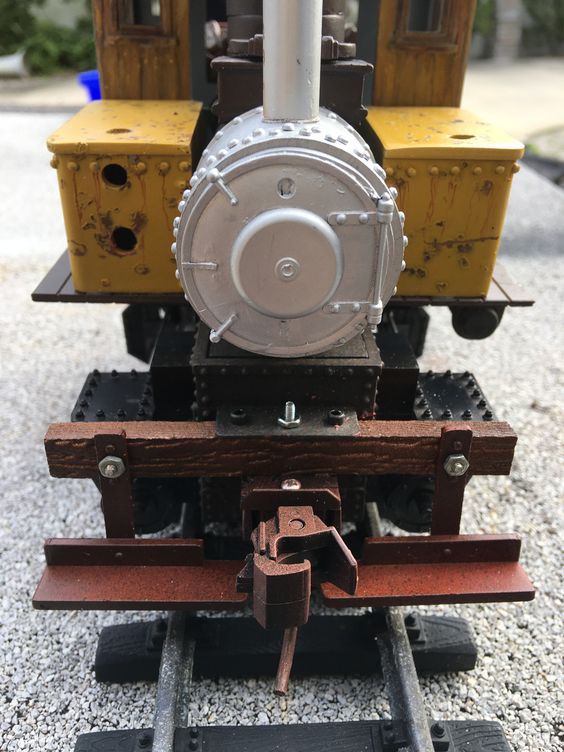
While waiting on some Mason Bogie parts I have decided on using the left over parts to build a small side tank industrial tank engine. Took the two cab sections and mated them together and glued the two pieces of leftover roofs together. Found the side tanks from a LGB 2017 engine that came off of Rosy, cut off the tab and started filling in some of the holes. Found that the width of the two coupled with a 3/4" PVC coupling was the same width as the cab. Added the wood bunker from the original Lionel 0-6-0 to the back and shortened a left over frame from a previous butcher job after modifying it to match the motor housing of a newer 2017 block. Still working on a water filler saddle for the side tanks and but did come across a smoke box front of a 2010 which I added to a plastic hole plug and fits nicely into the 1" coupling, Added the fire box left over from the sacrificed Spreewald (Mason Bogie drive) and it starting to com together. Today I added rivet detail to the 2 side tanks and gave a light coat of primer. Rivets are actually 1/2 round 2 mm plastic beads glued to the side of the tanks, time consuming but not near as bad as individual holes for each rivet. Still have to find a motor for the motor block as I bought it without but it was new and unused and in great shape and has all the looks of American valving. Think I’ll call this engine “old Joe” will post more as the build moves along.













 good suggestions from several readers, I found some material that my wife had that had a nice weave and was thin enough to show the groves that I had scribed in the top. Selecting a suitable sized piece I glued it with some titebond glue and alowed to dry. I was going to dye the material with coffee or tea but it had a print on it so I wound up painting it and will probably put some tar patches on it where a ember from the stack landed and caused a burn hole. still more to come, Bill
good suggestions from several readers, I found some material that my wife had that had a nice weave and was thin enough to show the groves that I had scribed in the top. Selecting a suitable sized piece I glued it with some titebond glue and alowed to dry. I was going to dye the material with coffee or tea but it had a print on it so I wound up painting it and will probably put some tar patches on it where a ember from the stack landed and caused a burn hole. still more to come, Bill

